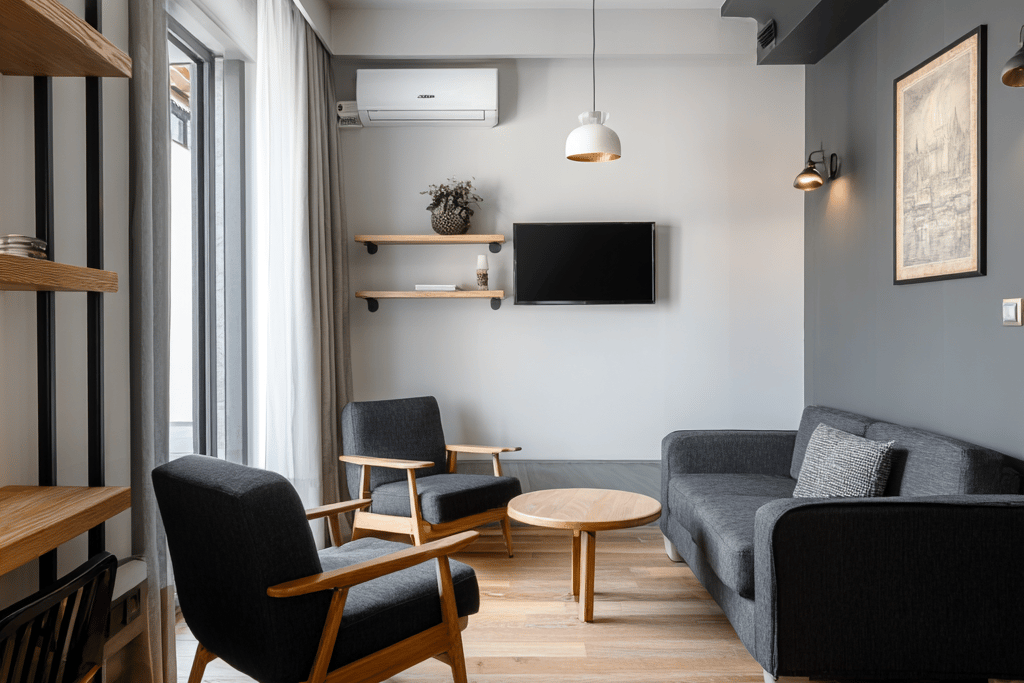
All products featured on Fit Nest Traveler are independently selected and reviewed by our team. If you click on a link and make a purchase, we may earn a commission at no additional cost to you.
Maximizing Small Spaces
Smart Design Strategies For Interior Designers


In the world of interior design, the challenge of maximizing small spaces has become increasingly prevalent, especially with the rise of urban living and the premium placed on square footage. As designers, we're constantly tasked with transforming compact areas into functional and stylish havens, a challenge that requires both creativity and strategic thinking. The key to success lies in embracing multifunctionality and thinking vertically. Gone are the days when furniture served a single purpose; now, it's all about pieces that can adapt to various needs, such as Murphy beds that fold into wall units or coffee tables with hidden storage. These versatile elements not only save space but create dynamic environments that evolve with the occupant's needs.
Utilizing vertical space is crucial in small interiors. Wall-mounted shelving, hanging planters, and ceiling-high bookcases maximize storage without consuming precious floor space. This approach not only provides practical solutions but also draws the eye upward, creating an illusion of height and spaciousness. Incorporating clear or reflective materials in these vertical elements further enhances the sense of openness. Speaking of reflective surfaces, the strategic use of mirrors remains a timeless trick in small space design. Mirrors can work wonders by bouncing light around the room and creating the illusion of depth, whether used as mirrored cabinet doors in a tiny bathroom or as a full-length mirror in a cramped bedroom.
Color and light play pivotal roles in maximizing small spaces. While the traditional wisdom of using white to create a sense of spaciousness still holds merit, designers shouldn't shy away from experimenting with color. Deep, rich hues can add depth and coziness, while strategic pops of bright colors create visual interest without overwhelming the space. Layered lighting is equally important, combining ambient, task, and accent lighting to create a well-lit space that feels larger and more inviting. The concept of zoning has also gained traction in small space design, using area rugs, different flooring materials, or ceiling treatments to delineate distinct areas within an open plan, maintaining an open feel while providing functional separation.
Interestingly, the power of negative space is often overlooked in small space design. Contrary to the instinct to fill every nook and cranny, leaving some areas empty can actually make a room feel larger. This approach provides visual breathing room, which is essential in creating a sense of spaciousness. When it comes to storage, the eternal challenge of small space living, built-in solutions are invaluable. Custom cabinets that fit perfectly into awkward corners, under-stair storage units, or built-in window seats with hidden compartments can maximize every inch of available space. Even often-wasted areas like the space above doors or in kick plates beneath kitchen cabinets can be transformed into clever storage solutions.
Ultimately, designing for small spaces isn't about limitations; it's an opportunity for creative problem-solving and innovative thinking. It challenges designers to flex their creative muscles and develop solutions that surprise and delight clients. By embracing these smart design strategies, even the tiniest of spaces can be transformed into stylish, functional masterpieces that adapt to the evolving needs of modern living. As urban spaces continue to shrink and the demand for efficient design grows, the ability to maximize small spaces will remain a valuable skill in the world of interior design.


